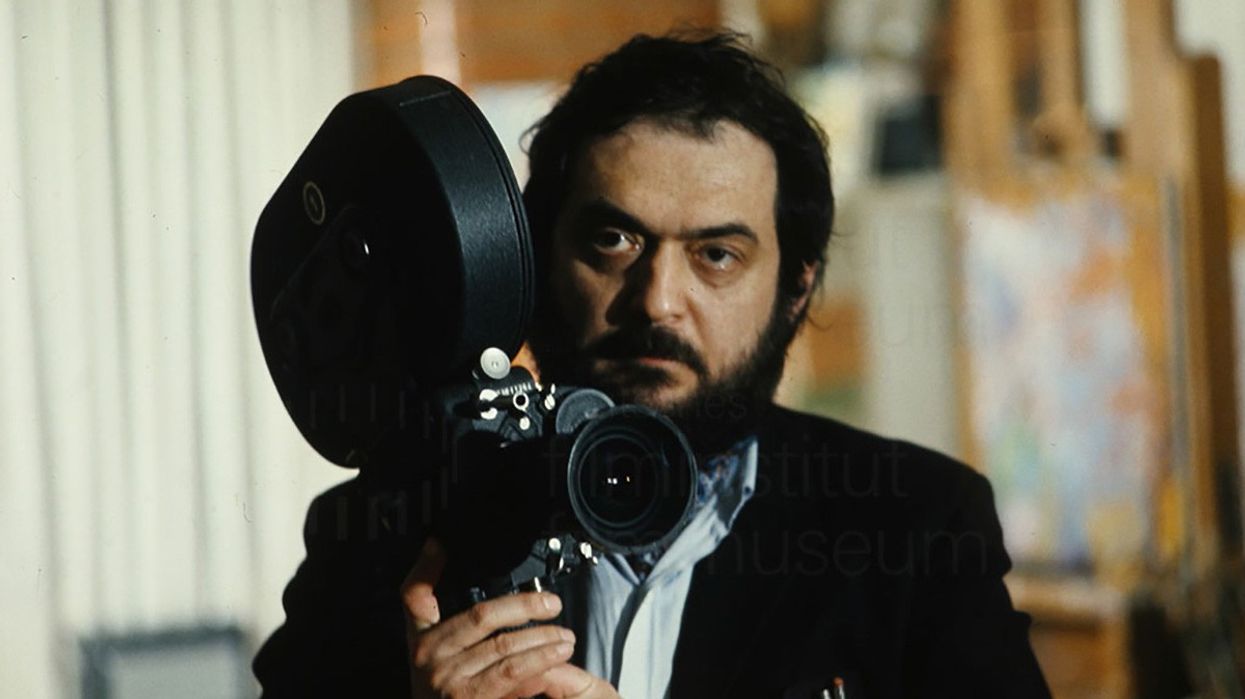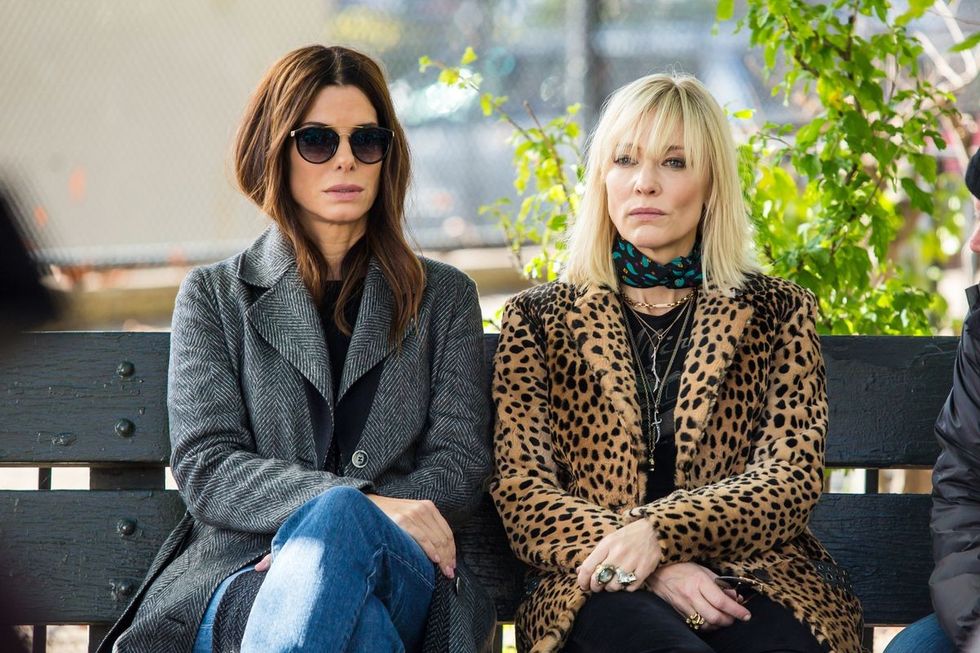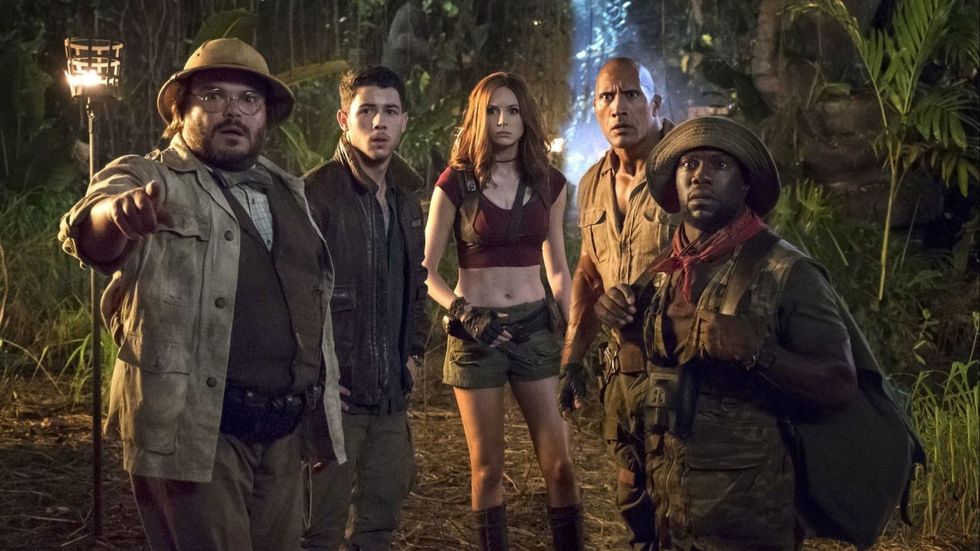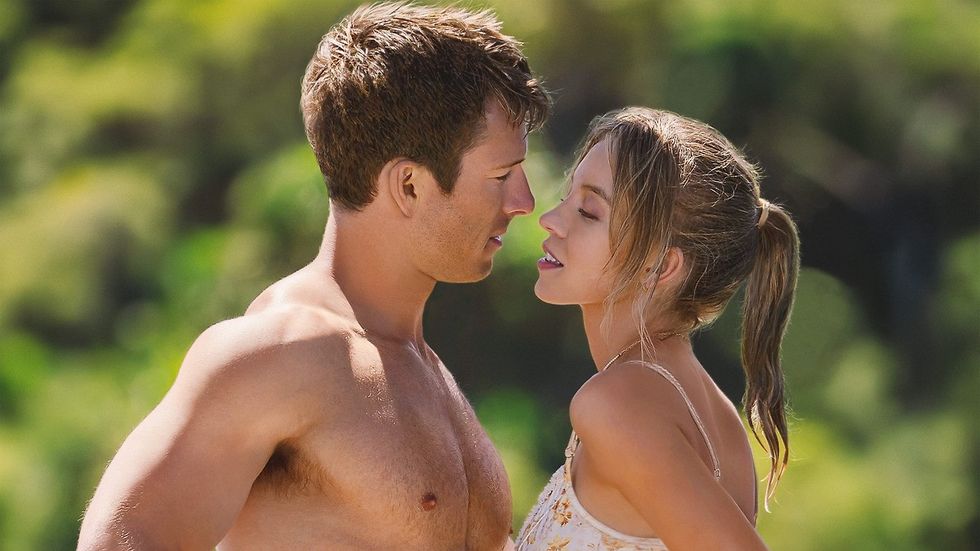Watch: Meet Stanley Kubrick's Beloved Cameras
An in-depth look at the many cameras used by legendary director Stanley Kubrick over the course of his career.

When Stanley Kubrick was 13 years old, his father gave him a present that would set off a lifelong obsession. It was the iconic Graflex Pacemaker Speed Graphic camera, which was considered standard equipment for many American press photographers at the time. But it was only the first of many cameras that Kubrick would use in an illustrious career as a photojournalist, filmmaker, and certified gear-head.
Kubrick never used technology for the sake of novelty; he deployed each and every device for its own specific reason.
An excellent new video essay from Cinema Tyler takes an in-depth look at the many cameras used by the legendary director over the course of his career.
The Photojournalist
At the age of 17, Kubrick's photo of a newspaper vendor reacting to FDR's death earned him the job at Look magazine that jumpstarted his filmmaking career. Throughout the 1940s, the future director captured photos of life in New York City. In 1948, at the age of 19, Kubrick gave an interview to a magazine called The Camera. In the piece, entitled "Camera Quiz Kid: Stan Kubrick," the future director said, "I think aesthetically recording spontaneous action, rather than carefully posing a picture, is the most valid and expressive use of photography." The interview also revealed that Kubrick used "an automatic Rolleiflex, a 4 by 5 Speed Graphic, and a Contax camera."
"I find it is virtually impossible to explain what you want in a hand-held shot to even the most talented and sensitive camera operator."
The interview also revealed that when shooting interiors, Kubrick prefers natural light, but switches to flash when the dim light restricts the natural movement of the subject. And for a series of candid photographs shot mostly at night on the NYC subway, "Kubrick used a Contax...at 1/8 second. The lack of light tripled the time necessary for development." But as Kubrick recalled, "I wanted to retain the mood of the subway, so I used natural light."
The Moviemaker
Indeed, Kubrick was very serious about cinematography, and in 1951, at the age of 22, he produced his first short documentary, Day of the Fight, shooting with an "Eyemo daylight-loading camera that takes 100-foot spools of 35mm black-and-white film," according to high school friend and early collaborator Alexander Singer. The climax of the film is a boxing match, but because there would only be one chance to get the shots they needed, "Kubrick shot the handheld material, and Singer operated the second Eyemo, positioned on a tripod. They were both shooting 100-foot loads, which required constant reloading. With two cameras, one could be shooting while the other was reloading."
The Killing, Kubrick's second feature, was shot using a Mitchell BNC. During one set-up for a dolly shot, Kubrick requested to use a 25mm lens—the widest lens available at the time. He wanted to use it on the Mitchell, and though Kubrick knew the dynamic effect he was looking for, he returned to the set to find that DP Lucien Ballard had replaced the lens with a 50mm and moved the camera back, explaining that it would be easier to light and that no one would know the difference. There was a moment of silence, after which Kubrick responded, "Lucien, either you move that camera and put it where it has to be to use a 25mm, or get off this set and never come back."
Ballard complied. That was the last argument they ever had.
One of Kubrick's favorite cameras was the Arriflex 35 II C, which he first used on A Clockwork Orange. The director frequently operated on his films, though, owing to union rules, he often didn't take credit for it. But in a 1972 interview with Sight and Sound, Kubrick did revealed that "all of the hand-held camerawork is mine. In addition to the fun of doing the shooting myself, I find it is virtually impossible to explain what you want in a hand-held shot to even the most talented and sensitive camera operator."
On his next film, Barry Lyndon, Kubrick used another Arriflex, the 35 BL, as well a Mitchell BNC, which he famously set up to accommodate Zeiss lenses that had originally been designed for NASA. The f/0.7 lens enabled him to shoot scenes by candlelight, using the fastest film then available: Kodak's 5254, rated at 100 ISO.
1980'sThe Shining was one of the first films to feature the Steadicam, Garrett Brown's image stabilization system. More than 35 years later, it remains the film most synonymous with the now-ubiquitous technology.
Throughout his career in photography and cinematography, Kubrick was an innovator, but he never used technology for the sake of novelty; he always deployed each and every device for its own specific reason, whether he was taking candid photos of couples on the subway or recreating the 18th century. Kubrick's eye, combined with his gearhead's love of technology, made him a consummate filmmaker's filmmaker—and one of the most strikingly visual directors of all time.
Source: Cinema Tyler














